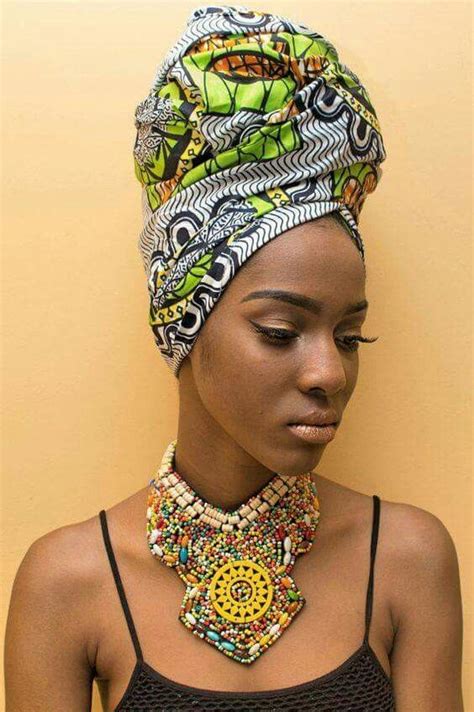A Headwrap for Every Occasion
African head wraps, known as gele, duku, or wrappa, are more than just accessories; they are a vital part of African culture and identity. With an estimated 500 million people in Africa wearing head wraps, they have played a significant role in shaping the continent’s fashion landscape.

A Tapestry of Tradition
The earliest evidence of head wraps in Africa dates back over 10,000 years, with depictions found in ancient Egyptian tombs and pottery. In the 14th century, head wraps became a symbol of status and wealth, with elaborate designs and intricate fabrics reserved for royalty. By the 19th century, head wraps had become commonplace across Africa, worn by both men and women for protection from the sun, dust, and cold.
Expressing Identity and Heritage
Head wraps serve as a canvas for self-expression and cultural storytelling. Different colors, patterns, and fabrics carry specific meanings and can indicate a person’s tribe, religion, or social status. For example, the signature blue indigo of the Yoruba people of Nigeria symbolizes purity and spirituality, while the bold geometric prints of the Maasai people of Kenya represent their warrior heritage.
A Symbol of Strength and Empowerment
In many African societies, head wraps are a symbol of strength and empowerment for women. They represent a woman’s ability to protect herself, her family, and her community. Head wraps also play a role in traditional ceremonies, such as weddings, funerals, and coming-of-age rituals.
Modern Evolution and Global Influence
While head wraps remain deeply rooted in African culture, they have also evolved to incorporate modern trends and influences. Designers around the world are incorporating head wraps into their collections, inspiring new ways to style and wear them. Celebrities like Rihanna, Beyoncé, and Lupita Nyong’o have been seen rocking head wraps on the red carpet, bringing them into the mainstream.
Benefits of Wearing Head Wraps
Beyond their cultural and aesthetic value, head wraps offer a range of practical benefits:
- Protection from Sun and Heat: Head wraps provide shade and protect the scalp from harmful UV rays, reducing the risk of sunburn and heatstroke.
- Hair Care: Head wraps can help keep hair moisturized and protected from damage, especially for those with natural or textured hair.
- Cooling Effect: The fabrics used in head wraps tend to be breathable, allowing air to circulate and keeping the wearer cool.
- Stylish Accessory: Head wraps are a versatile and affordable way to add a touch of style to any outfit.
Tips and Tricks for Styling Head Wraps
Mastering the art of head wrapping takes time and practice. Here are a few tips to get started:
- Choose the Right Fabric: The best fabrics for head wraps are breathable and easy to work with, such as cotton, silk, or satin.
- Start with Small: Don’t try to tackle elaborate styles right away. Start with simple folds and knots to get the hang of it.
- Use a Scarf or Bandanna: If you’re a beginner, a scarf or bandanna can be a good option for practicing before using large pieces of fabric.
- Experiment with Different Folds: There are countless ways to fold a head wrap. Try different folds to create different looks and find your personal style.
Creative Applications for Head Wraps
In recent years, head wraps have found new applications beyond their traditional use:
- Home Decor: Head wraps can be used to create vibrant throw pillows, wall hangings, and table runners.
- Fashion Accessories: Head wrap fabric can be incorporated into other fashion items, such as handbags, scarves, and jewelry.
- Art: Head wraps are a unique and versatile medium for creating abstract and geometric art.
Table 1: Types of African Head Wraps
| Region | Name | Description |
|---|---|---|
| West Africa | Gele | Elaborate, turban-like head wrap |
| East Africa | Duku | Wraparound headpiece with a knot at the back |
| South Africa | Wrappa | Rectangular cloth wrapped around the head |
| Central Africa | Tignon | Bonnet-like head wrap |
Table 2: Cultural Significance of African Head Wraps
| Culture | Meaning |
|---|---|
| Yoruba (Nigeria) | Blue indigo symbolizes purity; elaborate gele designs indicate status |
| Maasai (Kenya) | Bold geometric prints represent warrior heritage |
| Zulu (South Africa) | Cowrie shells sewn onto head wraps signify fertility |
| Igbo (Nigeria) | Red coral beads indicate wealth and prestige |
Table 3: Benefits of Wearing Head Wraps
| Benefit | Description |
|---|---|
| Sun Protection | Shields scalp from harmful UV rays |
| Hair Care | Protects and moisturizes hair |
| Cooling Effect | Breathable fabrics keep wearer cool |
| Style | Versatile and affordable accessory |
Table 4: Creative Applications for Head Wraps
| Application | Description |
|---|---|
| Home Decor | Throw pillows, wall hangings, table runners |
| Fashion Accessories | Handbags, scarves, jewelry |
| Art | Abstract and geometric art |
